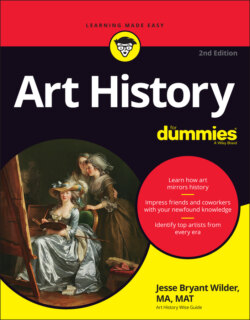Читать книгу Art History For Dummies - Jesse Bryant Wilder - Страница 33
Recording religion, ritual, and mythology
ОглавлениеThe earliest works of art — prehistoric cave paintings from 30,000 BC to 10,000 BC (see Chapter 4) — were likely to have been a key part of a shamanistic ritual (a priest acting as a medium enters the spirit world during a trance). In many prehistoric cultures, people thought religion and ritual helped them to prepare for an afterlife or control their environment. For example, fertility rituals were linked to a god or goddess of crops and were designed to guarantee a successful harvest. Art (and often dance and music) frequently had a role in these religious rituals.
Scholars don’t know much about the religion of prehistoric humans (people who lived between 30,000 BC and 3500 BC). But they know a great deal about the religions of the earliest civilizations in Mesopotamia and Egypt (which began around 3500 BC). Some Mesopotamian art and most Ancient Egyptian art have a religious theme. Egyptian art typically focuses on the afterlife and humans’ relationship with the gods.
During the Roman period (476 BC–AD 500), religious art was less common than secular art (art about humankind’s life on earth). But religious art dominated the Middle Ages (500–1400), lost some ground during the humanistic Renaissance (1400–1520) and Mannerist periods (1520–1600), and made a comeback in the Baroque period (1600–1700) during the religious wars between Catholics and Protestants.
